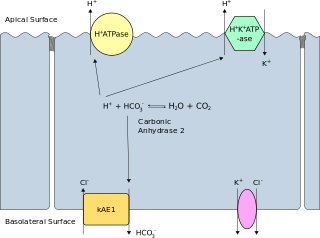
Band 3 anion transport protein, also known as anion exchanger 1 (AE1) or band 3 or solute carrier family 4 member 1 (SLC4A1), is a protein that is encoded by the SLC4A1 gene in humans.
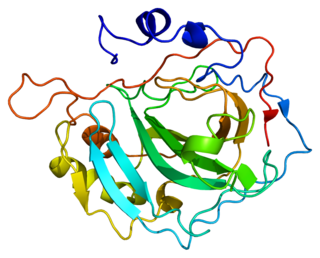
Carbonic anhydrase II, is one of sixteen forms of human α carbonic anhydrases. Carbonic anhydrase catalyzes reversible hydration of carbon dioxide. Defects in this enzyme are associated with osteopetrosis and renal tubular acidosis. Renal carbonic anhydrase allows the reabsorption of bicarbonate ions in the proximal tubule. Loss of carbonic anhydrase activity in bones impairs the ability of osteoclasts to promote bone resorption, leading to osteopetrosis.

Inositol 1,4,5-trisphosphate receptor type 1 is a protein that in humans is encoded by the ITPR1 gene.

Carbonic anhydrase 3 is an enzyme that in humans is encoded by the CA3 gene.
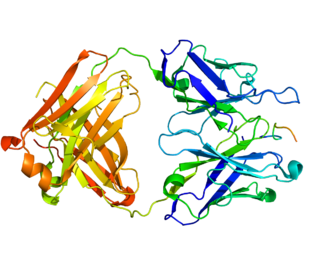
Carbonic anhydrase IX is an enzyme that in humans is encoded by the CA9 gene. It is one of the 14 carbonic anhydrase isoforms found in humans and is a transmembrane dimeric metalloenzyme with an extracellular active site that facilitates acid secretion in the gastrointestinal tract. CA IX is overexpressed in many types of cancer including clear cell renal cell carcinoma (RCC) as well as carcinomas of the cervix, breast and lung where it promotes tumor growth by enhancing tumor acidosis.

Actin-like protein 6A is a protein that in humans is encoded by the ACTL6A gene.

Carbonic anhydrase 1 is an enzyme that in humans is encoded by the CA1 gene.

Carbonic anhydrase 4 is an enzyme that in humans is encoded by the CA4 gene.

Carbonic anhydrase 12 is an enzyme that in humans is encoded by the CA12 gene.

Sodium/potassium-transporting ATPase subunit alpha-3 is an enzyme that in humans is encoded by the ATP1A3 gene.

Carbonic anhydrase 6 is an enzyme that in humans is encoded by the CA6 gene. It is also called 'gustin' because of its presence in saliva, and lower-than-normal levels of salivary zinc in individuals with hypogeusia.
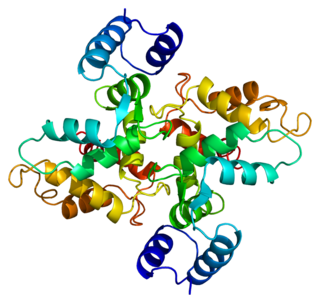
Hippocalcin-like protein 1 is a protein that in humans is encoded by the HPCAL1 gene.

Carbonic anhydrase-related protein 10 is an enzyme that in humans is encoded by the CA10 gene.
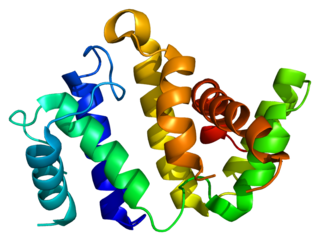
Rho GTPase activating protein 26 (ARHGAP26) also known as GTPase Regulator Associated with Focal Adhesion Kinase (GRAF) is a protein that in humans is encoded by the ARHGAP26 gene.

Actin-like protein 6B is a protein that in humans is encoded by the ACTL6B gene.
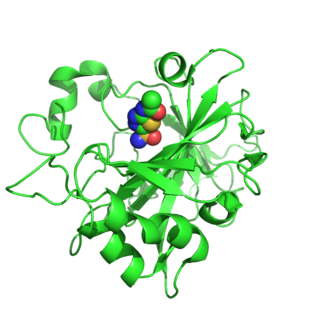
Carbonic anhydrase 14 is an enzyme that in humans is encoded by the CA14 gene.

Carbonic anhydrase 5B, mitochondrial is an enzyme that in humans is encoded by the CA5B gene.

Carbonic anhydrase 7 (CA7) is an enzyme that in humans is encoded by the CA7 gene.

Carbonic anhydrase-related protein 11 is a protein that in humans is encoded by the CA11 gene.

Carbonic anhydrase 5A, mitochondrial is a protein that in humans is encoded by the CA5A gene.






















